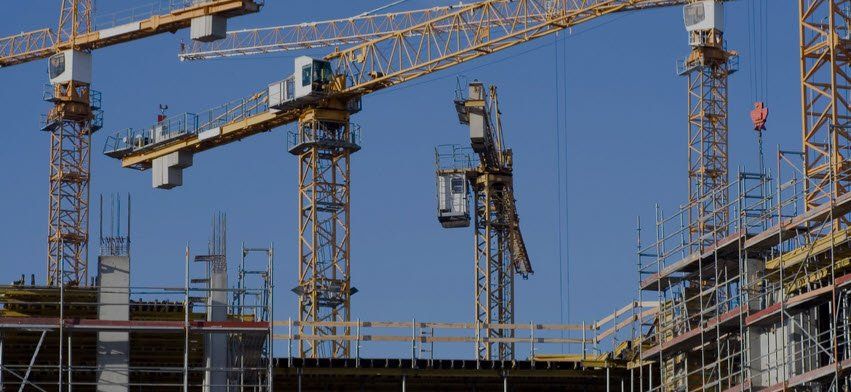The following are insights about aspects of the real estate and infrastructure businesses and industries. We hope that the insights provide useful ideas for our existing and prospective clients. Please contact us
to discuss how we can be of assistance.
Insights for Thought
Feasibility Studies
A Feasibility Study report is a business plan for a specific real estate project. It provides the rationale and the support for that rationale to pursue a specific real estate project from the feasibility phase, pre-construction, construction and occupancy through investment management. A comprehensive format emphasizes areas such as the benefits and costs for each of the five project constituencies, justification of the project relative to the target market’s needs and wants and a thorough risk analysis with appropriate mitigations. A feasibility report is dynamic and should as often as necessary to incorporate any change to assumptions or to incorporate new information. As a result, all assumptions made and external dependencies specified in the Feasibility Study are meticulously documented.
Because a Feasibility Study provides specific and organized information about a real estate project, a comprehensive Feasibility Study is a crucial part of the development process. It outlines investors, end users, government, community – and the developer (our client) about a project’s operations and goals. The importance of a comprehensive, thoughtful Feasibility Study cannot be overemphasized. Much of the project's success hinges on it.
Despite the critical importance of a business plan, many entrepreneurs and companies procrastinate when it comes to preparing a written business plan document. They argue that their marketplace changes too fast for a feasibility plan to be useful or that they just do not have enough time. However, just as a builder will not begin construction without a blueprint, eager real estate investors should not rush into new investments without a plan or a Feasibility Report.
Essential sections included in a Feasibility Study include:
Because a Feasibility Study provides specific and organized information about a real estate project, a comprehensive Feasibility Study is a crucial part of the development process. It outlines investors, end users, government, community – and the developer (our client) about a project’s operations and goals. The importance of a comprehensive, thoughtful Feasibility Study cannot be overemphasized. Much of the project's success hinges on it.
Despite the critical importance of a business plan, many entrepreneurs and companies procrastinate when it comes to preparing a written business plan document. They argue that their marketplace changes too fast for a feasibility plan to be useful or that they just do not have enough time. However, just as a builder will not begin construction without a blueprint, eager real estate investors should not rush into new investments without a plan or a Feasibility Report.
Essential sections included in a Feasibility Study include:
- Marketability Study
- Could the project be built? Are necessary approvals in place, and if not, what needs to be done? Can the site support a building structure that is planned? Can any environment contamination be cleaned up?
- Should the project be built? Who is the target market? What do they want? What is your market willing to pay? A marketability study tries to create a market area demand model based on available demographic information and the application of common sense to develop a picture of the current and future market area trends that may effect demand (and thereby affect market penetration and sales revenues) along with preparation of market area supply information to include the effects of historical, current and potential future market competition (direct and indirect) that may impact the project's market penetration opportunity and prospective sales revenues.
- Who are the competitors? What do they offer and how is their product priced? A competitive analysis gathers this information, and compares the competitor's products to your project justifying appropriate pricing.
- Define a spatial monopoly, a sustainable market niche that should place the client’s project at a distinct advantage over competitors (assuming the client company's plan is professionally executed and managed on an ongoing basis).
- Benefits and Costs Analysis
- The benefits analyses strives to answer the question, “What’s in it for me?” Each of the five constituencies of a development project has this question, and unless the answer can be detailed comprehensively and convincingly for them, the project will have at best weak acceptance or will not move forward or be mired in endless meetings before approval is received. Of course, with the benefits, come costs. The identified costs should hopefully exceed the benefits.
- Risk Analysis and Mitigation
- The risk analysis identifies eight areas of risk that that every real estate project, or corporation for that matter, has with regard to its existence. The risks are detailed in each of these eight areas, and then mitigations are outlined for each of those risks. This analysis is important for two reasons:
- One, it offers a checklist for our client to ensure that risks - and mitigations - are identified, and
- Two, thinking through a project in such a comprehensive manner provides the client with a well-thought out investment and demonstrates creditability to the client's constituencies.
Of course, there are many other topics addressed in a Feasibility Report such as site plans, building designs and floor plans, financial analyses and proformas, schedules, marketing and leasing plans, exit strategies, and so on. Overall, the Feasibility Study, must answer four basic questions:
- What is it that you (the developer) are doing?
- Who are your doing the project for?
- Whom will your project affect?
- Does it make financial sense?
Contact Us
for more information.



